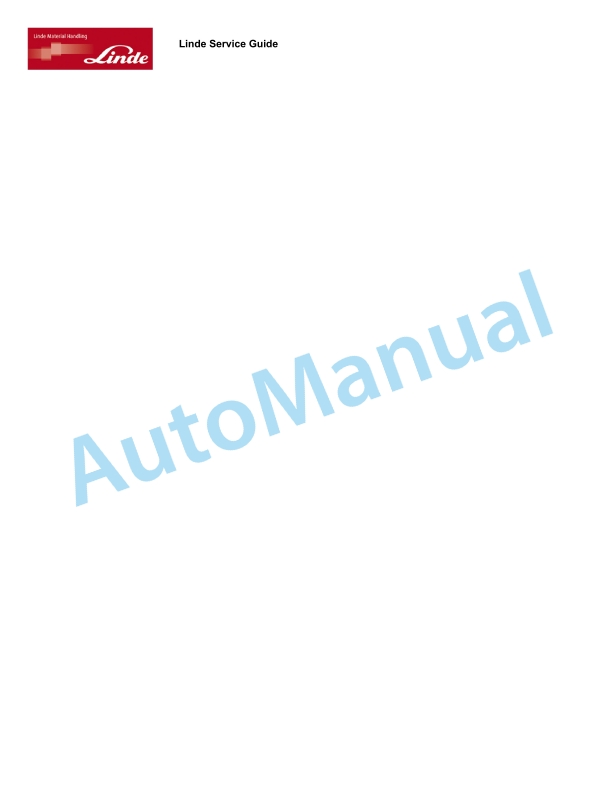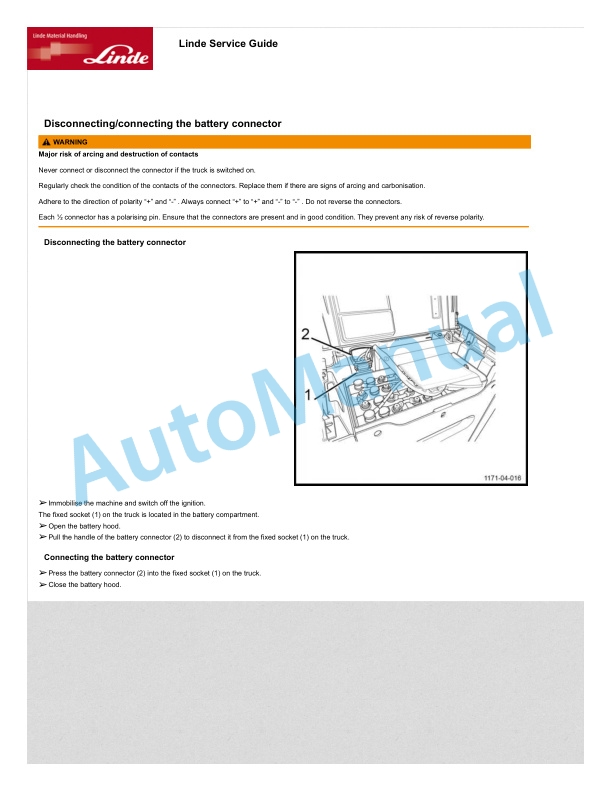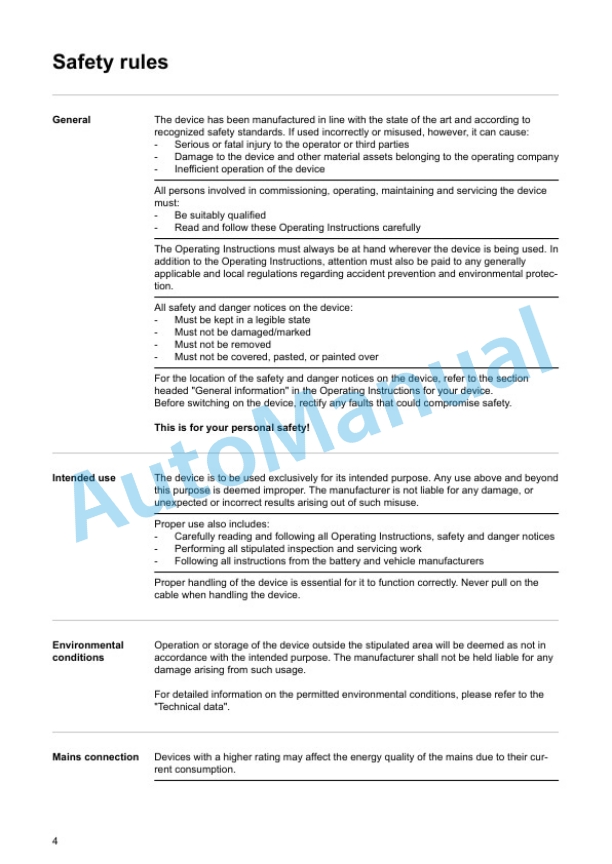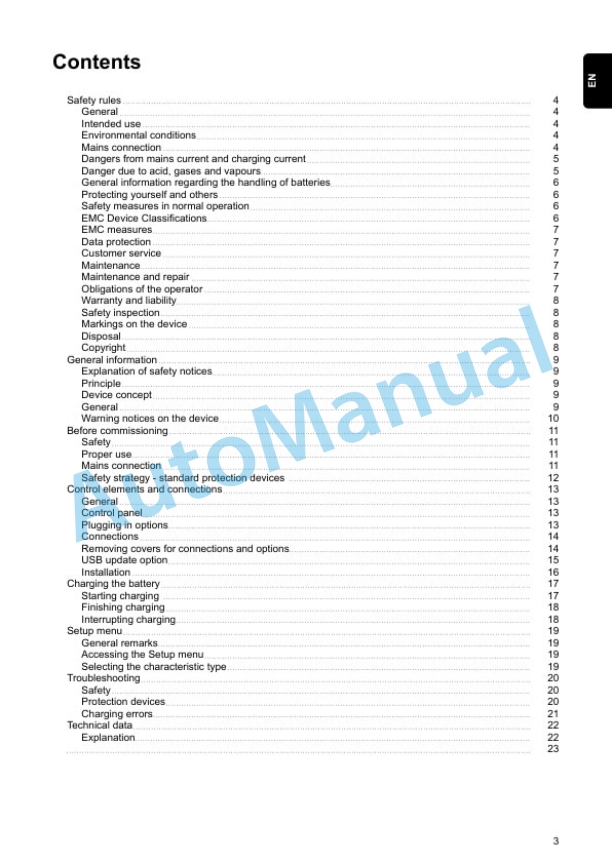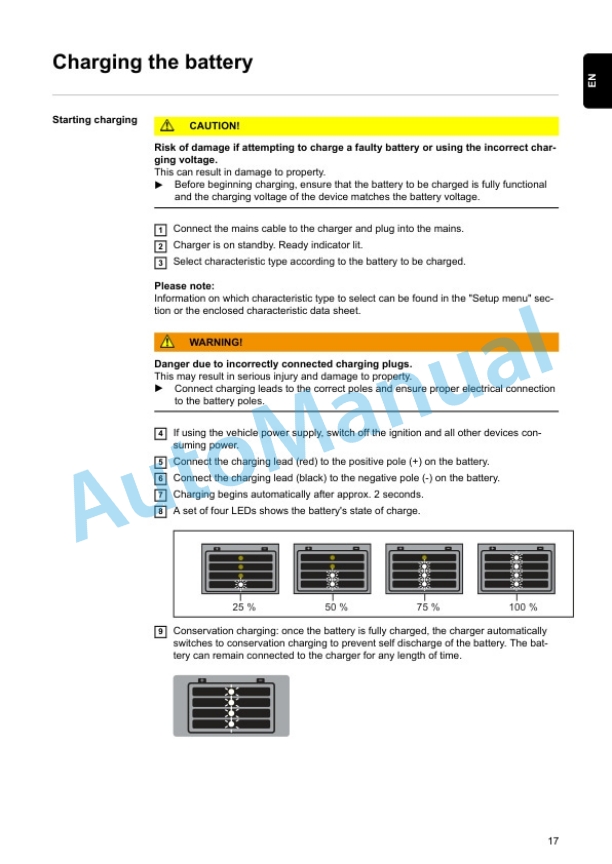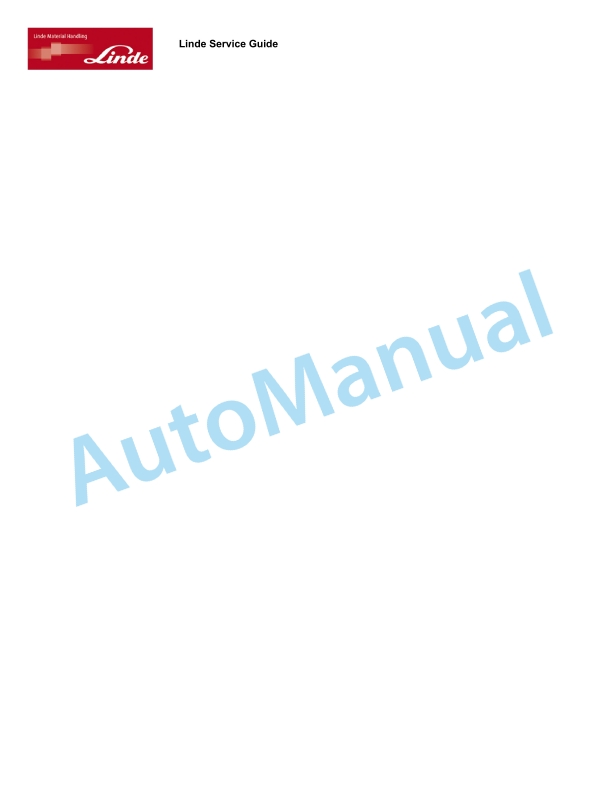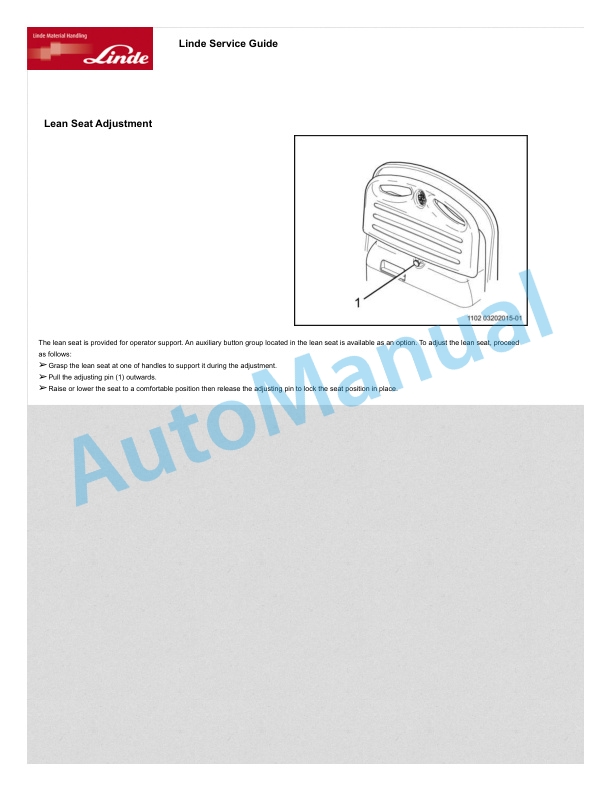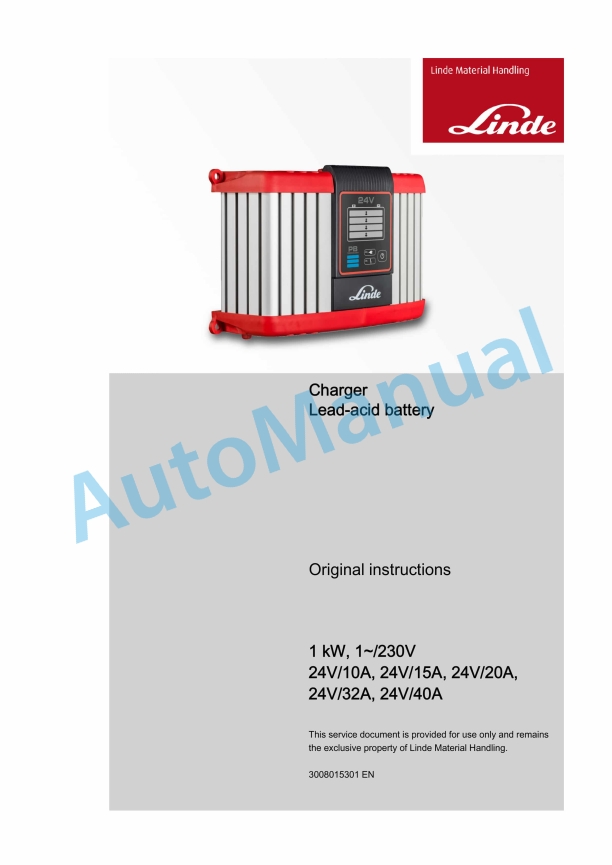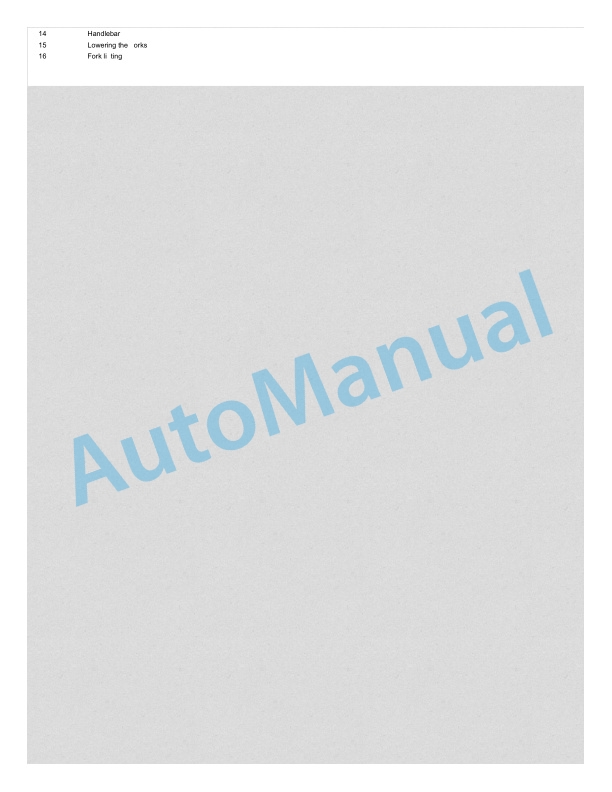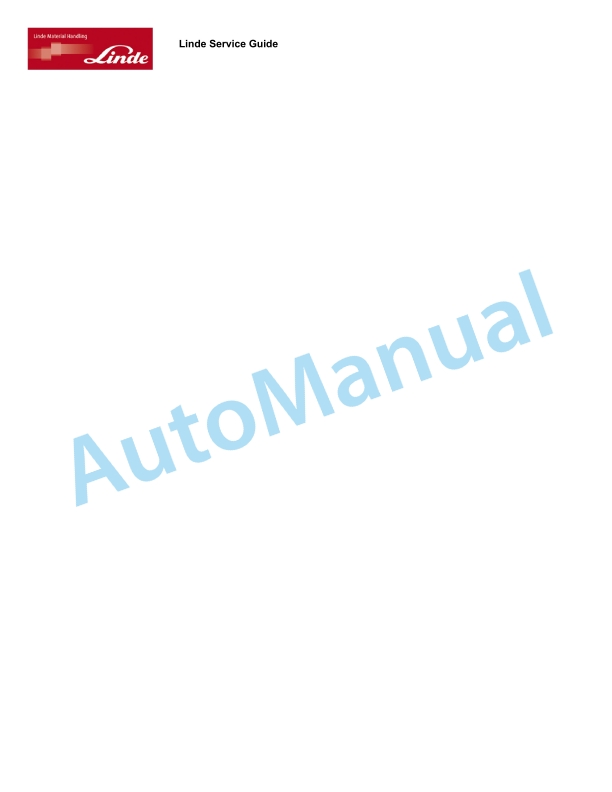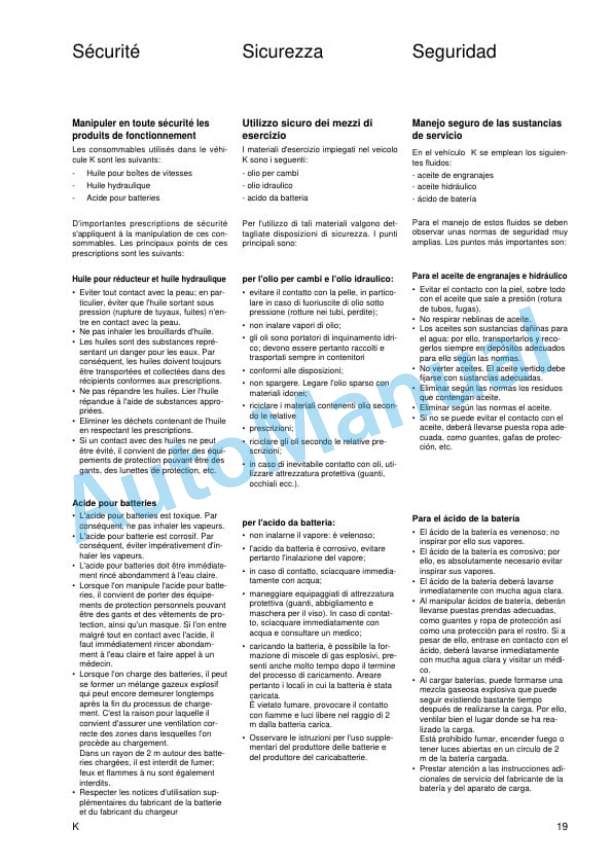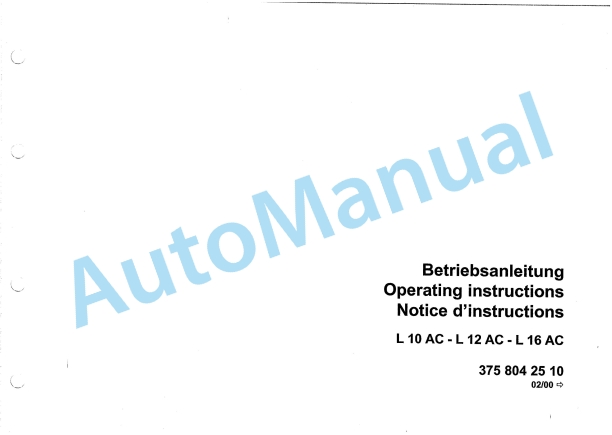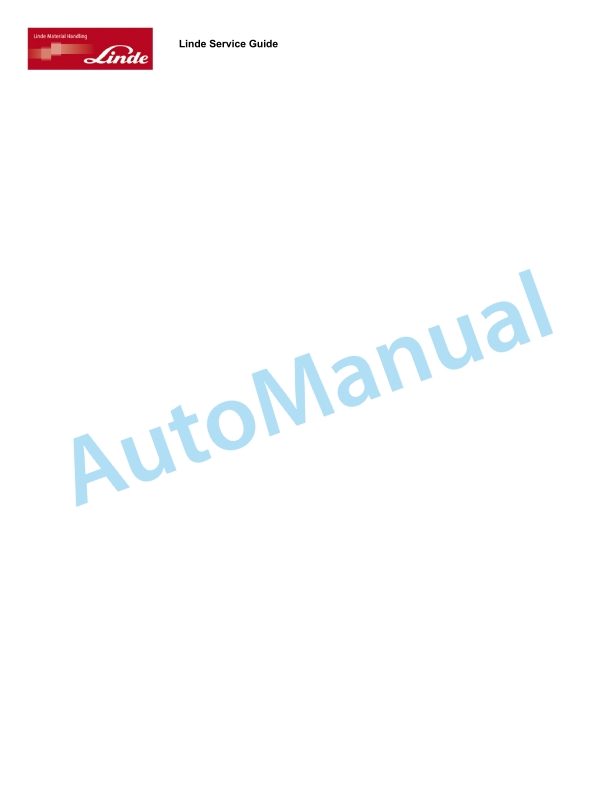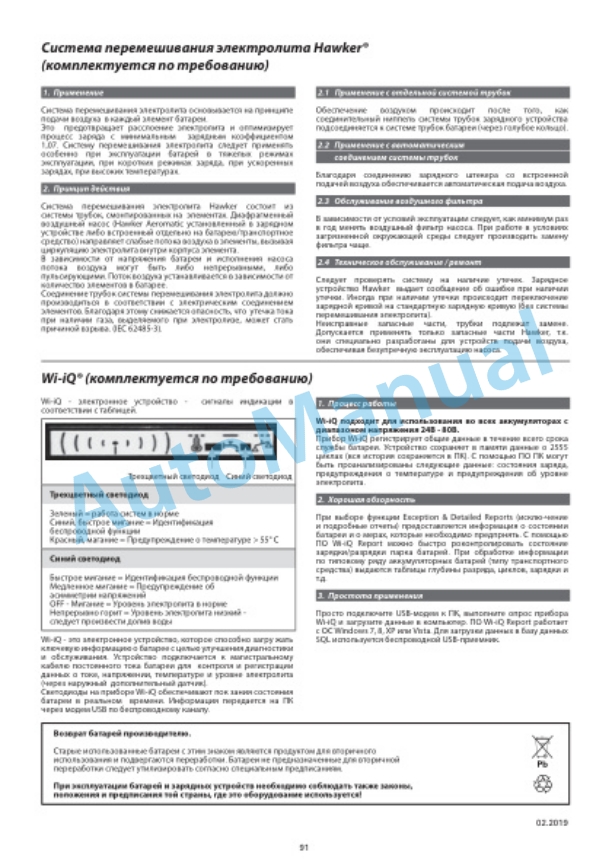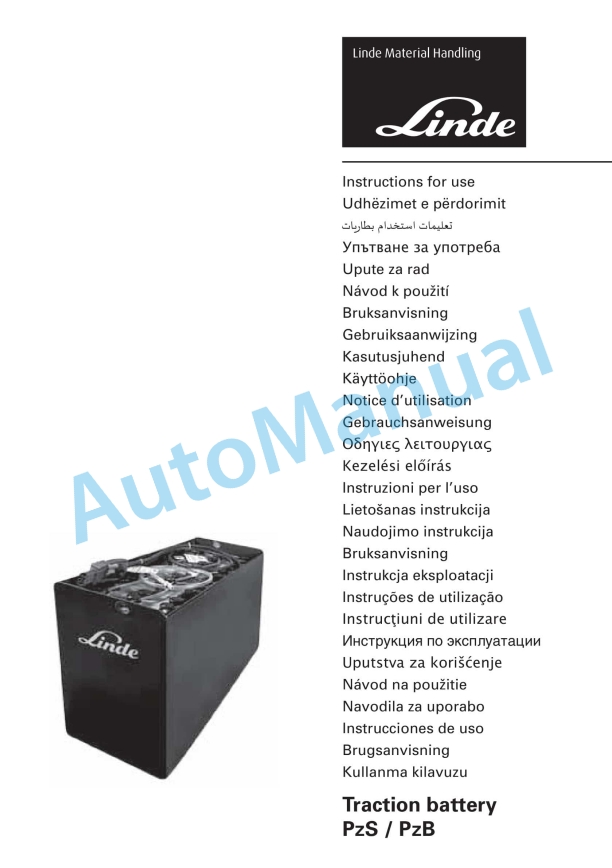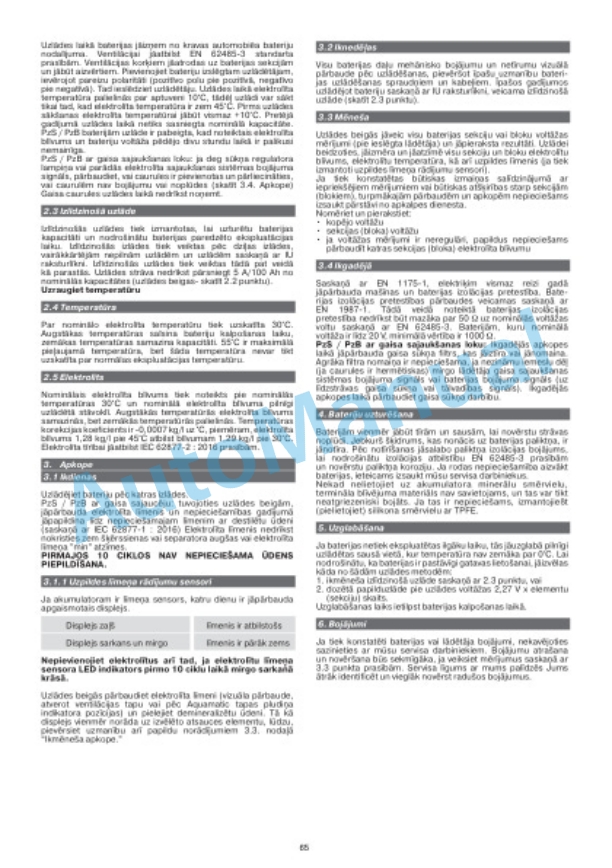Linde 1171-01 – L06AC, L10AC, L12AC, L16AC Operating Instructions SN W41171V00001 and up
$20.00
- Type Of Manual: Operating Instructions
- Manual ID: SN W41171V00001 and up
- Format: PDF
- Size: 24.7MB
- Number of Pages: 277
- Serial Number:
SN W41171V00001 and up
Category: Linde Operator Manual PDF
-
Model List:
- L06AC
- L10AC
- L12AC
- L16AC
- 1. V lithiumion batteries
- 1.1. Table of content
- 1.2. Introduction
- 1.2.1. Important information about the compatibility of the lithiumion battery and truck
- 1.2.2. Before using the truck
- 1.2.3. Important information about this manual
- 1.2.4. Identification label on the lithiumion battery
- 1.2.5. Correct use
- 1.2.6. Dangerous misuse
- 1.2.7. Productspecific risks
- 1.2.8. Information on the conformity of lithiumion batteries
- 1.2.9. Explanations of terms and symbols
- 1.2.10. Qualification of the user
- 1.2.11. Description of use and climatic conditions
- 1.3. Safety
- 1.3.1. Battery management system and safety
- 1.3.2. What to do in an emergency
- 1.3.2.1. Firefighting
- 1.3.2.2. The battery becomes very hot and indicates a fault
- 1.3.2.3. If gas escapes from the battery
- 1.3.3. Firstaid measures
- 1.4. General views
- 1.4.1. General view of 24V LiB batteries from 1.7 to 3.5
- 1.4.2. General view of the 24V LiB 7.1 battery
- 1.4.3. General view of the 24V LiB battery from 10.6 to 14.2
- 1.5.1. Description of the battery
- 1.5.2. Safety guidelines
- 1.5.3. Status of the battery on delivery
- 1.5.4. Transport mode
- 1.5.5. Connecting the battery to the truck
- 1.5.6. Switching on the battery
- 1.5.7. Modes of operation
- 1.5.8. Temperature conditions for operating . charging
- 1.5.9. Charging the battery
- 1.5.9.1. Displaying the charging status
- 1.5.9.2. Charging the battery
- 1.5.9.3. Using the vertical socket to charge the battery
- 1.5.9.4. Using the side socket to charge the battery
- 1.5.9.5. Truck onboard charger
- 1.5.10. Changing the lithiumion battery
- 1.5.11. Switching off the battery
- 1.5.12. Resolving battery faults
- 1.5.13. Transporting lithiumion batteries
- 1.5.13.1. General
- 1.5.13.2. Safety guidelines for transporting the battery out of the truck
- 1.5.13.3. Safety guidelines for transporting the truck with a battery
- 1.5.13.4. Safety guidelines for transporting the battery
- 1.5.13.5. Detecting possible battery damage
- 1.6. Maintenance
- 1.6.1. Regular maintenance
- 1.6.2. Service plan
- 1.6.3. Cleaning the battery
- 1.6.4. Transporting and storing within the company
- 1.6.4.1. Safety provisions
- 1.6.4.2. Storage conditions
- 1.6.5. Disposing of batteries
- 1.7. Technical specifications
- 1.7.1. Lithiumion battery datasheet
- 2. Electric counterweight pallet stackerL06 AC, L10 AC, L12 AC, L16 AC
- 2.1. Table of content
- 2.2. Introduction
- 2.2.1. Your truck
- 2.2.2. Conformity marking
- 2.2.3. Declaration that reflects the content of the declaration of conformity
- 2.2.4. Identification label
- 2.2.5. Correct use
- 2.2.6. Description of use and climatic conditions
- 2.2.7. Impermissible use
- 2.2.8. Symbols used
- 2.2.9. Taking delivery of the industrial truck
- 2.2.10. Rules for the operating company of industrial trucks
- 2.2.11. Disposing of gel and lead batteries
- 2.3. Safety
- 2.3.1. Safety regulations
- 2.3.2. Handling consumables
- 2.3.3. Emissions
- 2.3.3.1. Noise emission values
- 2.3.3.2. Vibration values for upper limbs
- 2.3.4. Residual risks
- 2.3.5. Stability
- 2.3.6. Competent person
- 2.3.7. Periodic general checks on the trucks
- 2.4. General views
- 2.4.1. General view of the truck
- 2.4.2. General view of the technical compartment
- 2.4.3. General view of the technical compartment with the separate hydraulic block
- 2.4.4. Controls
- 2.4.5. Display
- 2.4.6. Electronic key (option)
- 2.4.7. Labels
- 2.5.1. Technical description
- 2.5.2. Checks before first commissioning
- 2.5.3. Preshift checks before starting work
- 2.5.4. Daily checks before starting work
- 2.5.4.1. Checking the function of the controls
- 2.5.4.2. Checking the safety devices
- 2.5.5. Truck operating instructions
- 2.5.6. Display
- 2.5.6.1. Selection buttons
- 2.5.6.2. Using the display unit
- 2.5.7. Driving regulations
- 2.5.8. Driving
- 2.5.8.1. Determining the direction of travel
- 2.5.8.2. Starting up
- 2.5.8.3. Forward travel.reverse travel
- 2.5.8.4. Double throw safety switch
- 2.5.8.5. Emergency off switch
- 2.5.8.6. Horn
- 2.5.8.7. Braking
- 2.5.8.8. ECO mode
- 2.5.8.9. Using the truck on a ramp
- 2.5.9. BlueSpot
- 2.5.10. connect access system (LFM)
- 2.5.11. Transporting loads
- 2.5.11.1. Reading the capacity label
- 2.5.11.2. Progressive stopping of the carriage in the lower position
- 2.5.11.3. Using the mast
- 2.5.11.4. Operation of the mast tilt
- 2.5.11.5. Handling a single load
- 2.5.12. Cold store usage (optional)
- 2.5.13. Before leaving the truck
- 2.5.14. Gel and lead battery
- 2.5.14.1. General information on batteries
- 2.5.14.2. Opening and closing the battery hood
- 2.5.14.3. Disconnecting.connecting the battery connector
- 2.5.14.4. Charging the battery
- 2.5.14.5. Charging the battery using an external charger
- 2.5.14.6. General information on changing batteries
- 2.5.14.7. Changing the vertical access battery
- 2.5.14.8. Replacing the side access battery
- 2.5.15. Handling the truck in an emergency
- 2.5.15.1. Emergency lowering of the mast
- 2.5.16. Handling the truck in specific situations
- 2.5.16.1. Slinging the truck
- 2.5.16.2. Lifting the truck
- 2.6. Maintenance
- 2.6.1. General information
- 2.6.2. Technical data for inspection and maintenance
- 2.6.3. Recommended lubricants
- 2.6.4. Regular maintenance
- 2.6.5. Service plan
- 2.6.6. Chassis, bodywork and fittings
- 2.6.6.1. Cleaning the truck
- 2.6.6.2. Cleaning the battery and the battery compartment
- 2.6.7. Transmission
- 2.6.7.1. Cleaning the traction motor cooling fins
- 2.6.8. Steering and wheels
- 2.6.8.1. Cleaning the pinion gear of the steering geared motor
- 2.6.8.2. Checking the condition of the wheels
- 2.6.9. Electrical equipment
- 2.6.9.1. Cleaning and blowing air through the electrical components
- 2.6.9.2. Checking the electrolyte level and topping up with water
- 2.6.9.3. Checking the condition of the cables, terminals and battery connector
- 2.6.10. Hydraulic systems
- 2.6.10.1. Checking the hydraulic system for leaks
- 2.6.10.2. Checking the hydraulic oil level
- 2.6.11. Lift mast
- 2.6.11.1. Cleaning and lubricating the chains
- 2.6.11.2. Adjusting the length of the mast chains
- 2.6.11.3. Checking the protective screen
- 2.6.12. Storage and disposal
- 2.6.12.1. Storage of truck
- 2.6.12.2. Disposal of old trucks
- 2.7. Datasheet
- 2.7.1. Datasheet L06L10L12L16 AC
- 2.7.2. Mast types
- 2.7.3. Ecodesign requirements for electric motors and variable speed drives
- 3. Leadacid battery charger 24V
- 4. Leadacid battery charger 24V . 48V
- 5. Leadacid battery charger 24V . 48V . 80V
- 6. LiIonCharger 24V . 120A
Rate this product
You may also like
Linde Operator Manual PDF
Linde 1102-01 – ECR27, ECR36 Production site LMH-NA Operating Instructions
$20.00
Linde Operator Manual PDF
Linde 1110-01 – N20C, N20VI, N20VLI, V08-01, V08-02 Operating Instructions SN W41110V00529 and up
$20.00
Linde Operator Manual PDF
Linde 011-01 – K Generation 1 2, K Generation 3, K Generation 4 Operating Instructions
$20.00
Linde Operator Manual PDF
$20.00
Linde Operator Manual PDF
Linde 1120-01 – R-matic, R10, R12, R14, R16, R20, R25 Operating Instructions SN 10.12 and up
$20.00
Linde Operator Manual PDF
Linde 1111-01 – N20VI, N20VLI Operating Instructions SN 10.09 and up SN up to W41111V00299
$20.00

